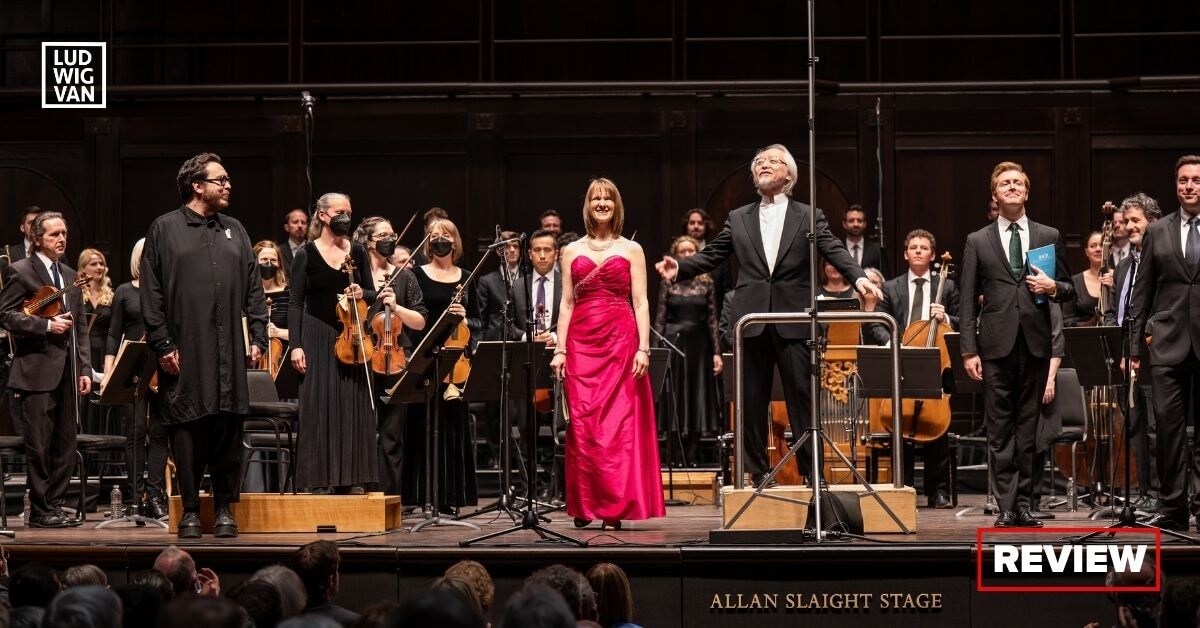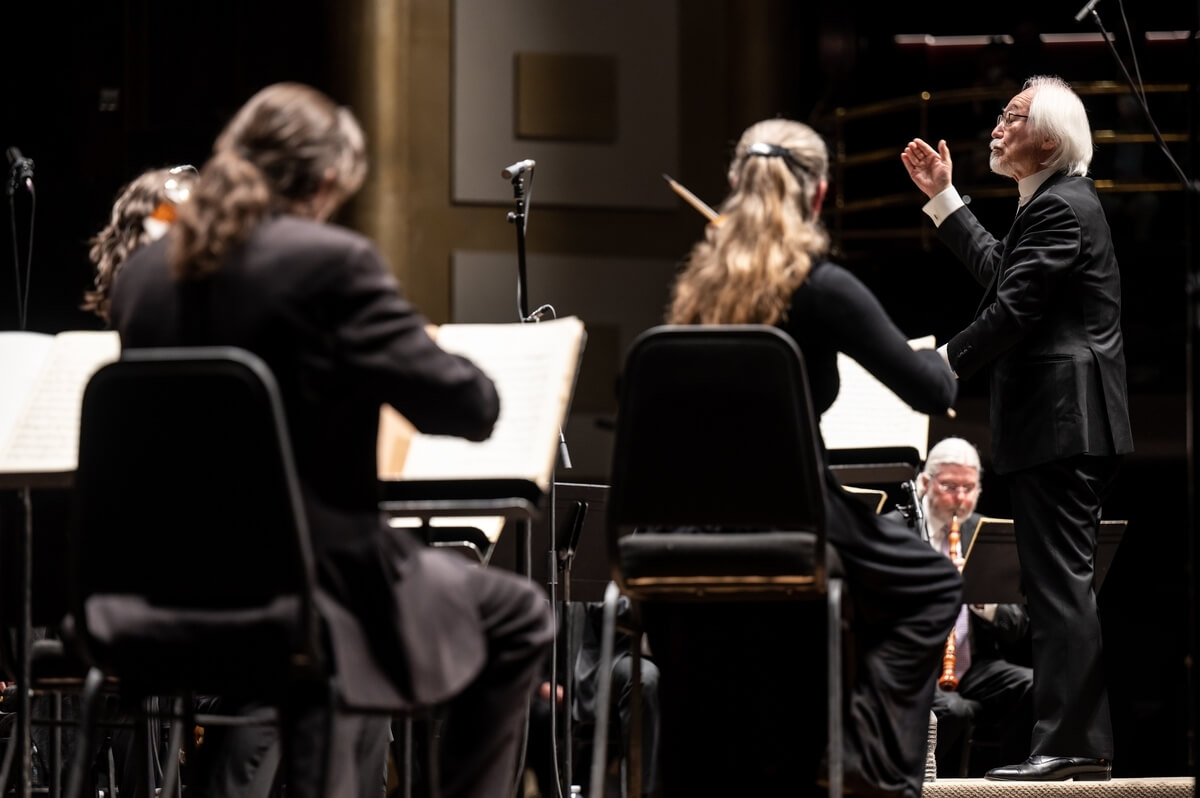
Bach, B-Minor Mass: Tafelmusik, Masaaki Suzuki directing. Massey Hall, May 5, 2022.
Bach’s Mass in B Minor is always a major undertaking. Tafelmusik made it seem doubly major Thursday night by engaging Masaaki Suzuki, one of the world’s best-known Bachmeisters, to lead what turned out to be an appropriately stirring performance.
Adding to the specialness was the setting: Massey Hall, Toronto’s ranking concert facility before Roy Thomson Hall supplanted it in 1982. As far as can be determined from online listings, this was the first classical act in the sacred space since its reopening in November as a rock-and-pop roadhouse.
Let it be said from the outset that the vaunted “revitalization” has left the room substantially (indeed surprisingly) intact. Yes, there are modern lighting and speaker arrays above the stage, but these are suspended in an unobtrusive way so as not to do optical battle with the signature Moorish arches.
Stained-glass windows add subtle colour; seating is comfortable but old-fashioned. The wood of the stage wall looks as utilitarian as ever. Within a minute of finding my seat in the first balcony, I had the strange feeling that nothing had changed. Was it really four decades ago that I heard Horowitz in this hall, or four weeks?
Perhaps this is a way of saying Massey Hall has preserved its primary virtue, which is to let you concentrate on the music. Acoustics might be a little more revealing and less plush than before, but this is not a problem when a performance is as finely honed and carefully balanced as this. Five-voice fugues rang out clearly. Intonation was excellent. While the sound of the 27 Tafelmusik choristers could not be called monumental or bottom-heavy, it was full when it needed to be.

Of course, there was more to the assignment than getting the notes. Bach strives for drama and transcendence in this score. Suzuki summoned both in the transition from the solemn Crucifixus to the joyous Et resurrexit. Conducting without a baton, but more astutely than some baroque bosses, the snowy-haired veteran could taper a phrase for expressive purpose without sacrificing momentum. Sometimes he would dial down the volume to a cadence to create an effect that was paradoxically more impressive than an all-out shout.
Players, also numbering 27, included warm woodwinds, a heroic natural horn and a trio of brilliant natural trumpets. Obbligatos were softly expressive. The timpanist made smart sounds; violins spoke as one in the sorrowful Agnus Dei. Apparently, all that tuning up was for a purpose. Full marks to the firm and mobile continuo crew. Thankless but essential work.
Solo voices were chamber-scaled. Tim Mead, a British countertenor, did clarion double duty as second soprano and alto. He and his compatriot, soprano Joanne Lunn, brought an engagingly competitive edge to the Et in unam Dominum duet of the Credo. Of one substance, sure, but distinctive nonetheless!
Lunn was also well-matched with violinist/leader Geneviève Gilardeau in the Laudamus te, both stressing the lyrical rather than virtuosic qualities of the music. Tenor Thomas Hobbs (another Briton) captured the pathos of the Benedictus and Cree-Métis baritone Jonathon Adams was softly elegant in the Et in Spiritum Sanctum. All walked to the centre of the stage from the sides when required, an agreeable touch of choreography.
This was, in short, a good night, and rewarded with a standing ovation, although it needs to be said that the opening Kyrie was seriously understated, a situation that might be remedied in the webcast of Friday night. Another demerit on Thursday was the failure of Tafelmusik to provide its audience with the Latin texts or even a list of the two-dozen-odd movements. There was a QR code to scan, but staring at a cellphone is obviously not desirable at a concert and no one, as far as I could tell, was taking advantage of this option. Let us hope the full-service printed program makes a comeback, and soon.
#LUDWIGVAN
Get the daily arts news straight to your inbox.



